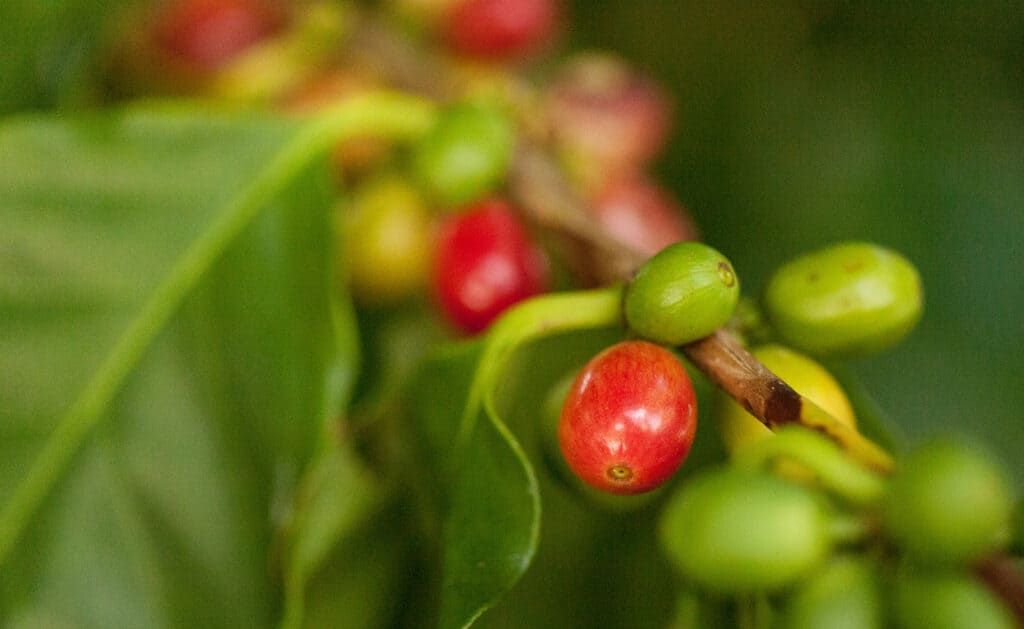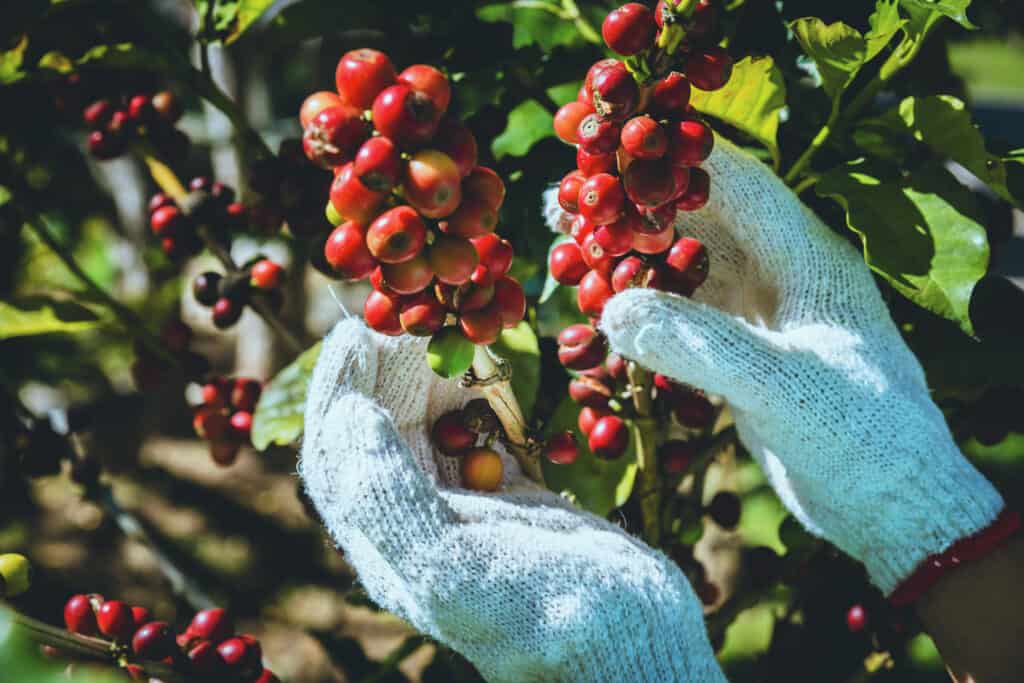
There is a difference between just loving coffee and truly knowing coffee. That difference comes from not just knowing the flavors, but knowing where the beans started and where they are now. Caturra coffee beans are no different.
Caturra coffee plants are a varietal of the bourbon coffee plant. Just like bourbon coffee, the caturra is known to be sweet, complex, and crisp. The caturra plant, however, has been modified to have a smaller plant size with berries that mature quickly, producing a higher coffee bean yield.
To understand this particular varietal of coffee bean, it is important to learn about where it has come from and how it has impacted the history of coffee beans.
History of Caturra Coffee
The bourbon coffee plant, and its varietal caturra, are part of the coffee species called Coffea arabica. Just as its name suggests, this coffee bean originally grew in Ethiopia. It is the most sought-after coffee type, making up 60% of the coffee consumed. Now, the coffee bean is grown mostly out of Brazil, which is where the Caturra coffee plant was found.
Caturra coffee plants were found on a Brazilian plantation between 1915 and 1918 within the state of Minas Gerais. Once it was discovered, selections were sent to the Instituto Agronomico (IAC) of Sao Paulo State in 1937. There, breeders studied the small size of the plant which allowed farmers to plant the crop closer together, enabling more fruit to be produced and harvested at once.
Through mass selection, the seeds of the superior plants were collected and then used to produce a new generation of caturra plants. It was introduced in Guatemala in the 1940s, where it spread across to Central America, where it has become one of the most economically important coffees in Central America.
Its small size and heavy berry production made it a prime candidate to be crossbred to create different varietals and cultivars, keeping the good qualities of the plant while improving its intolerance for fungi. It is also used as a “benchmark” for other cultivars that are being tested.

Varietals of the caturra coffee plant:
- Costa Rica 95
- Catiscia
- Lempira
- Catimor
- Castillo
Varietal vs. Cultivar
Coffee plants are altered in many ways to produce the desired results. They are each part of the base species of the plant, except with a few variations based on what is desired by the consumer and producer. There are two main types of plants produced in the coffee world: varietal and cultivar.
Varietal
This is a naturally occurring genetic mutation within a species. These can be kept, if beneficial to the producers, by mass selection. It can also be done by keeping a specific trait by saving the seeds from the plant and mass producing them as much as possible. Caturra coffee plants are a varietal of bourbon plants because they were created from a naturally occurring genetic change.
Cultivar
This is a human-created mutation within a species that is intended to produce desirable results. This is commonly done through plant taxonomy. Many of the varieties that were created through Caturra were produced this way.
Distinct Taste
The Coffea Arabica coffee bean is known for its wide taste variety. It can range from having a sweet-soft taste to a sharp-tangy taste. Unroasted, they tend to smell like blueberries. Roasted, the fruity smell stays, adding sugary undertones.
The Caturra berry, like the bourbon variety of the species, is known for its sweet, complex, and crisp taste. However, with its mutation came a slight change in flavor. The caturra coffee berry tends to have a bright acidity to it and is not as clear in its taste profile.
Plant Characteristics

Size of Plant
The caturra coffee plant is unique in that it has been genetically modified to produce a small plant with fast-maturing fruit, allowing farmers to plant more plants and harvest more often than the original bourbon species. It has a single gene mutation that causes dwarfism, this causes the plant to grow smaller than the average bourbon coffee plant.
Susceptibilities
While it is small in size and quickly produces fruit, the plant itself is hard to maintain due to its susceptibilities to diverse plant fungus and disease. Due to this, the plant is considered high-maintenance but is worth it for the flavor it gives and its high production ability.
One of the most common coffee plant issues comes from a condition called Coffee Leaf Rust. It is a plant disease caused by the fungus Hemileia vastatrix. This fungus attacks the leaves, leaving rust-colored lesions on the plant. This causes defoliation (loss of leaves) and can also cause high crop loss.
Coffee Berry Disease (CBD) is another common issue with the caturra plant as it is part of the Coffea arabica species. This disease is caused by the Colletotrichum kahawe fungus, which attacks the berries of the coffee plant. This fungus causes the berries to fall off the plant early, limiting the farmable crop on the plant.
Another common issue with this coffee plant is the infestation of Nematodes. These are microscopic roundworms that attack and infest the plant through the roots. This can cause berries to prematurely ripen, the dropping of berries, wilting, and even death of the plant. They are transferred from soil to soil.
Where to Buy Caturra Beans
Caturra coffee beans are rarely seen alone, but come in mixes with other Coffea Arabica beans and are often referenced as part of the “Ethiopian mix”
Spirit Animal – IHCAFE-90 & Caturra Coffee, Whole Bean Coffee, Medium Roast Coffee, Non-Gmo and Low Acid Coffee Beans, Honduras Coffee with Sugarcane, Floral, and Citrus Tasting Notes, 12oz
Hawaiian Maui Yellow Caturra — This is a Hawaiian-grown yellow variety of the Caturra coffee bean. It has notes of honey, wheat, bread, and allspice with hints of fig jam. It is sold as a whole bean as well as three different grind options.
Ethiopia Misty Valley Yirgacheffe Natural — This coffee mix is a washed and dried (and raw) combination of different types of coffee beans from Ethiopia. This mix is sold by the pound.
Hills Bros Coffee – Premium Gourmet – medium roast- whole bean- Premium Arabica — This blend contains 100% premium Arabica coffee beans, roasted to perfection. These beans were hand-selected from regions all over the world. They are whole beans and it’s recommended to grind them right before brewing.